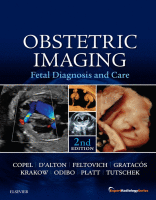Physical Address
304 North Cardinal St.
Dorchester Center, MA 02124

Introduction Tuberous sclerosis, also known as the tuberous sclerosis complex (TSC), is a disorder of cellular differentiation, proliferation, and migration in early development that variably affects multiple organ systems. First described in 1862 by Friedrich von Recklinghausen, TSC is characterized…

Introduction Autosomal recessive pontocerebellar hypoplasias (PCHs) are a group of severe neurodegenerative disorders affecting the cerebellum and pons. This disease appears in fetal or neonatal life with subsequent pontocerebellar degeneration, progressive microcephaly, and atrophy of the cerebral cortex. Most affected…

Introduction Cystic fibrosis (CF) is a single-gene autosomal recessive disorder characterized by chronic airway infection, pancreatic insufficiency, gastrointestinal dysfunction, and male infertility. Symptoms typically manifest during childhood, leading to early mortality in the third and fourth decades of life. Greater…

Introduction Roberts syndrome, also known as Roberts-SC phocomelia syndrome or pseudothalidomide syndrome, is a rare genetic disorder characterized by prenatal growth restriction, limb reductions, and craniofacial abnormalities. The upper extremities are more severely affected than the lower extremities, with common…

Introduction Prune-belly syndrome (PBS), also known as Eagle-Barrett syndrome, is a triad of anomalies composed of abdominal wall flaccidity, urologic abnormalities, and bilateral cryptorchidism. The typical urologic findings are distended bladder, hydronephrosis, and renal dysplasia. A patent urachus is a…

Introduction Poland sequence refers to congenital unilateral absence of the sternal costal portion of the pectoralis major muscle and ipsilateral upper limb anomalies. There is no known genetic etiology for Poland sequence. The pathogenesis of this disorder is suggested to…

Introduction Pierre Robin sequence (PRS) is a result of hypoplasia of the mandible leading to retrognathia or micrognathia, cleft palate, and posterior displacement of the tongue (glossoptosis). The classic cleft palate in PRS is a U-shape. Retrognathia and glossoptosis lead…

Introduction First described in 1958, pentalogy of Cantrell is a rare syndrome consisting of five anomalies including: (1) a midline supraumbilical abdominal wall defect, (2) a defect in the diaphragmatic pericardium, (3) a defect in the lower sternum, (4) a…

Introduction Noonan syndrome (NS), first described by Dr. Jacqueline Noonan in 1968, is a disorder characterized by facial dysmorphisms, cardiovascular defects primarily consisting of pulmonary stenosis, short stature, and variable developmental delay. In addition, affected individuals often display pectus excavatum…

Introduction Neu-Laxova syndrome (NLS) is an autosomal recessive, lethal disorder. The syndrome was first described in 1971 by Neu et al. who reported three siblings who were either stillborn or died shortly after birth with microcephaly and multiple congenital anomalies. In…